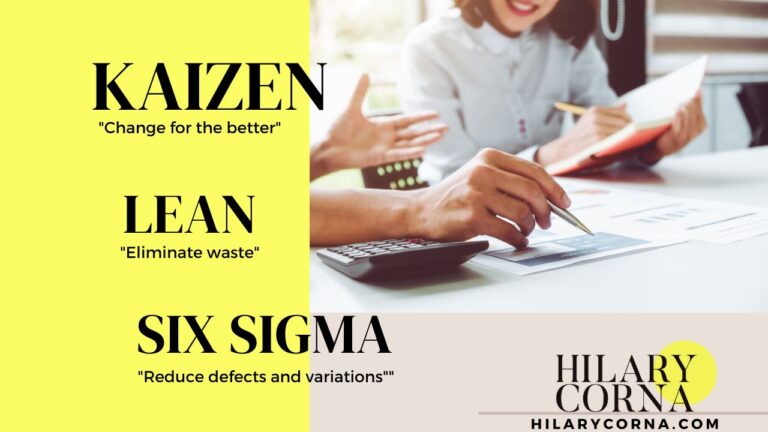Kaizen, Lean, and Six Sigma are three different things. But they all come from the same initiative and have the same goal, which is to improve processes. The difference is in the HOW they do it. To start, Lean and Six Sigma are practices, while Kaizen is a philosophy.
What Kaizen is in process improvement
The direct translation of Kaizen is “change for the better.” It’s not continuous improvement, as we often hear. The term continuous improvement works, but it’s only a Westernized regurgitation of Kaizen. I believe that you should really look at the literal translation of the language; otherwise, you’ll lose the intention.
Kai means change. Zen in Japanese means for the better. Kaizen as a whole is a philosophy that means we change when there is nothing wrong. You do not wait to lose a legacy client or a new competitor to enter the market to change. You are growing incrementally over time instead of making one big change when something goes wrong.
There is a system and a standard by which you change. It involves all employees in identifying and implementing small changes to improve processes. It emphasizes teamwork, which is called one-team alignment, and collective responsibility for achieving goals.
Lean
Lean improves processes by looking at how to reduce waste and increase efficiency by eliminating non-value-adding activities and streamlining processes. The Lean process improvement approach focuses on identifying and eliminating waste in a process, which is defined as any activity that does not add value to the customer. This includes activities such as overproduction, waiting, unnecessary motion, excess inventory, and defects.
Six Sigma
Six Sigma is a methodology and set of tools that focus on reducing defects and variability in processes. When you do things, you are looking at how variable they are. How variable is my conversion rate? How variable is my delivery timing, or my production quality levels? And then you want to keep within a standard deviation of variability.
It is based on the principle that by identifying and measuring the sources of errors and variability, the process can be improved to a level where only 3.4 defects per million opportunities are produced. Six Sigma methodology aims to improve the quality of process outputs by identifying and removing the causes of defects and minimizing variability in manufacturing and business processes.
Why Kaizen matters
Lean and Six Sigma are methodologies. To improve processes, Lean aims to reduce waste, while Six Sigma aims to reduce variability.
💡Fun Fact: Toyota doesn’t use either of the two. I also believe privately held companies don’t need both to improve their processes. What you do need is an engine to do process improvement while adopting Kaizen.
Kaizen is a philosophy used in process improvement that recognizes how small changes you make now can have huge impacts in the future. You are changing ahead of your competitors to build this reputation of having the best processes in the business, where people come to you to see what you’re doing. That’s how Toyota continues to lead its industry.
In love and respect,
Hilary Corna














